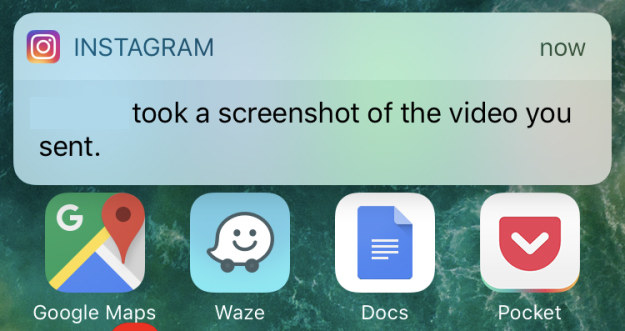The Truth About The Trump Data Team That People Are Freaking Out About

Alexander Nix is a director at SCL Group and CEO of its subsidiary, Cambridge Analytica, which worked on President Trump’s campaign.
Bryan Bedder / Getty Images
Last December, a Swiss publication called Das Magazin credited an obscure consulting firm that advised Donald Trump’s campaign with having “turned the world upside down” on Election Day. The article was an underground sensation in German, in a bootlegged English translation, and then on Vice, raising concerns that the company, Cambridge Analytica, used sophisticated psychological tools to manipulate unwitting American voters.
Readers shared the article more than 350,000 times, according to analytics service BuzzSumo. With it, conspiracy theories gave the firm almost unlimited power to control our lives with what one critic called a “weaponized AI propaganda machine.” And Cambridge Analytica itself has hardly shrunk from the controversy: Alexander Nix, the CEO, boasted that it had “profiled the personality of every adult in the United States of America — 220 million people.”
But interviews with 13 former employees, campaign staffers, and executives at other Republican consulting firms who have seen Cambridge Analytica’s work suggest that its psychological approach was not actually used by the Trump campaign and, furthermore, the company has never provided evidence that it even works. Rather than a sinister breakthrough in political technology, the Cambridge Analytica story appears to be part of the traditional contest among consultants on a winning political campaign to get their share of credit — and win future clients.
Every person who spoke to BuzzFeed News insisted on anonymity, with many citing a reluctance to cross the company’s powerful leaders, who insiders say include co-owner Rebekah Mercer, one of Trump’s major donors, and board member Steve Bannon, his chief strategist.
Yet when Nix claimed that on a single day during the campaign, the firm tested more than 175,000 different Facebook ad variations based on personality types, Gary Coby, who ran digital advertising for the Trump campaign, took to Twitter to call it a “100% Lie” and “total rubbish.” Gerrit Lansing, who worked with the campaign and is now the White House chief digital officer, also dismissed Nix’s claim as “a lie.” Both declined to comment further, as did Mercer and Bannon.
Cambridge Analytica insists it played an “instrumental” role in the campaign and made “an important contribution to the team effort,” according to a statement emailed by Joshua Kail, a public relations representative. But despite articles still featured on its website touting the role psychographic techniques played in Trump’s campaign, the statement added, “We have always stated on the record that Cambridge Analytica did not have the opportunity to dive deeply into our psychographic offering because we simply did not have the time.”
That psychographic approach starts, Nix has said, with classifying people according to five traits — openness, conscientiousness, extroversion, agreeableness, and neuroticism. In September, the company said it planned to pinpoint 20 million persuadable voters in battleground states and target them with messages carefully tailored to those traits.
Several people who worked directly with Cambridge Analytica told BuzzFeed News that despite its sales pitch and public statements, it never provided any proof that the technique was effective or that the company had the ability to execute it on a large scale. “Anytime we ever wanted to test anything as far as psychographic was concerned, they would get very hesitant,” said one former campaign staffer. “At no point did they provide us any documentation that it would work.”
During a tense exchange at a post-election conference for Republican data firms, an audience member asked Matt Oczkowski, head of Cambridge Analytica’s product team, if his firm had used any psychographic profiles at all during the Trump campaign. According to two people in attendance, Oczkowski said that the company had not.
Some insiders say the individual data scientists from Cambridge Analytica embedded with the campaign did top-notch work, including recognizing that Trump’s supporters were different than establishment Republicans. They helped identify, for example, a younger and more rural group of supporters they called “disenfranchised new Republicans.” But those same insiders say Cambridge Analytica’s executives have greatly overstated the firm’s importance to Trump’s victory and overall strategy.
”You get a lot of snake oil like this in data work,” said one consultant.
Some of the concern about Cambridge Analytica stems from reports that it has a vast trove of information on hundreds of millions of individual Americans.
In several articles, Nix has said the company has 5,000 pieces of data on every American adult. As creepy as that may sound, however, it’s common: Campaigns and political consultants on both the left and the right purchase data about everything from voters’ age and gender to their magazine subscriptions and TV habits.
Cambridge Analytica has also been scrutinized for a database of personal Facebook information it obtained several years ago from a researcher at Cambridge University, according to internal documents obtained by The Guardian. The researcher’s project offered people a free online psychological test and the option to share their Facebook profile data. His methods were then allegedly shared with SCL Group, Cambridge Analytica’s parent company, and replicated without either the participants’ or the researcher’s consent.
BuzzFeed News has previously reported that SCL Group said it had run a voter suppression project in Nigeria and its founder once compared its methods to those used by Hitler.
In marketing pitches, two GOP operatives recalled, Nix has claimed his company has access to proprietary information that includes Facebook data. One of the operatives said the data was too old to be helpful and couldn’t be updated. Others said they’d received a similar pitch, but Nix was too vague about the details for them to evaluate what the data really was. None of the campaign staffers BuzzFeed News spoke with said Cambridge Analytica’s proprietary data had played a key role in any decision-making.
As speculation has turned to what role Cambridge Analytica may have in supporting the Trump administration’s policies going forward, conspiracy theories about what the firm is doing with that personal Facebook data have multiplied.
Asked a series of detailed questions about that data and how it was obtained, the Cambridge Analytica spokesperson did not respond directly, but said the company “does not obtain data from Facebook profiles or Facebook ‘likes’ as reported.” He continued, “Cambridge Analytica developed all its own methodology and its own intellectual property. It did not partner with Cambridge University on these.”
Facebook, which told The Guardian in 2015 that it was investigating allegations that the company had improperly obtained data from its users, would not comment on the current status of that investigation. But as a general rule, Andy Stone, a Facebook spokesperson, said, “Misleading people or misusing their information is a direct violation of our policies and we will take swift action against companies that do, including banning those companies from Facebook and requiring them to destroy all improperly collected data.”
Quelle: <a href="The Truth About The Trump Data Team That People Are Freaking Out About“>BuzzFeed





